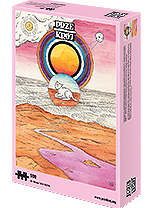
As Duncan Gow, a poor tailor from Edinburgh, ate his vegetable sandwiches, he didn’t suspect that this would be the last meal of his life. He died three hours and 15 minutes later.
It was 21st April 1845, at 4pm. The 43-year-old tailor was ravenously hungry – no surprise, he hadn’t eaten all day, he’d only had a glass of whisky with a friend, around noon. But Duncan’s children, a 10-year-old son and a 6-year-old daughter, decided to surprise their father by preparing him sandwiches from wild vegetables and herbs. Including from parsley, which their father loved so much that that day he ate an entire bunch. He said it was delicious.
He started to feel poorly about an hour later. He left for town, but along the way he began to stagger more and more, leaning on building walls and lampposts. His friends recalled that the tailor didn’t complain either about pain or about feeling bad; he wasn’t excited or feverish, but pale. Passers-by remembered thinking that they were dealing with a drunk.
Gow sat on some steps, where he was found by policeman James Mitchell, who was asked by an indignant woman to “take the drunk away”. Gow testified that he had lost his vision and couldn’t feel his legs, but he very much wanted to return to his home a kilometre away.
But instead of his house, the tailor ended up at the police station, where he was examined by a police doctor. He would later recall that Gow was fully conscious; he was babbling, but still able to give his address. He had trouble opening





